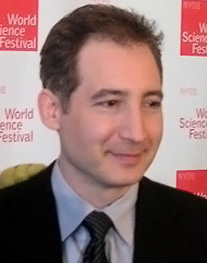
Image source:
Markus Poessel
Brian Greene is an American physicist and author who wrote The Elegant Universe and The Fabric of the Cosmos.
Quotes by Brian Greene in Time One
The ultimate source of order, or low entropy, must be the Big Bang itself.
Without invoking the power of symmetries, we’d be stuck at square one.
The problem arises when we try to explain how the universe became so uniform.